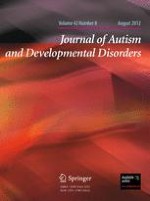Gepubliceerd in:

01-08-2012 | Letter to the Editor
Limitations of Meta-Analyses
Auteur:
Dido Green
Gepubliceerd in:
Journal of Autism and Developmental Disorders
|
Uitgave 8/2012
Log in om toegang te krijgen
Excerpt
It was with keen interest that I read a recent article providing a meta-analysis of motor coordination in Autism Spectrum Disorders (ASD: Motor Coordination in Autism Spectrum Disorders: A Synthesis and Meta-Analysis. Fournier, K.A., Hass, C.J., Naik, S.K., Lodha, N., & Cauraugh, J.H.
JADD, 2010, 40, 1227-40). This provides a timely summary of some of the major studies exploring motor coordination in ASD. While we/I agree that movement impairments are frequently evident in ASD—in our own study 79% (n = 101) of children met criteria for a definite motor impairment (Green et al.
2009)—the evidence for a universal and pervasive deficit across ASD subgroups is less clear. This may be in part due to the limitations of meta-analyses in which there is a risk that separate studies may have used the same sample source without being clearly identified. Shared samples should be controlled for to prevent effects that an inflated sample size might introduce, such as overstated precision with acceptance of a narrower confidence interval. For example, it is not clear whether the sample in Mostofsky et al.
2006 is distinct from that of Jansiewicz et al.
2006 (and perhaps also Gidley et al.
2008). An overlap in subjects may also have occurred between Glazebrook et al.
2006 and
2008. In view of the similarity in recruitment method, it is unclear whether some of the subjects from Hardan et al.
2003 also participated in Minshew et al.
2004. …